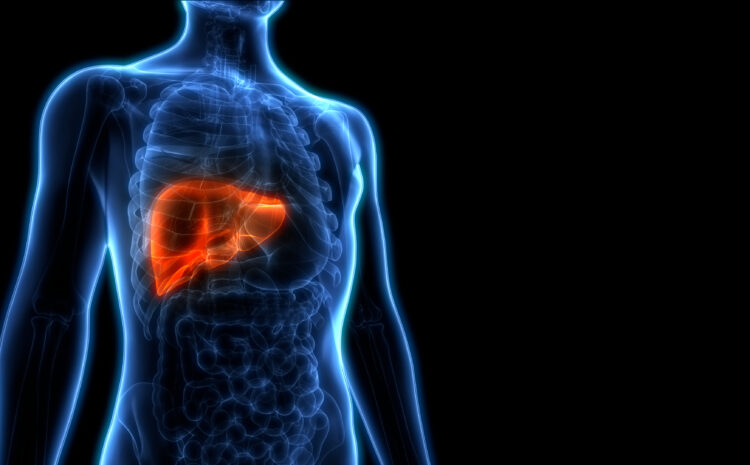
Role of thymosin beta 4 in non-alcoholic fatty liver
In the study published in European Journal of Pharmacology, Thymosin beta 4 (Tβ4) was used as a therapeutic agent to investigate its role in improving non-alcoholic fatty liver disease (NAFLD) mediated by ferroptosis.
Non-alcoholic fatty liver disease (NAFLD) is a prevalent and progressive liver disorder characterized by the accumulation of fat in the liver in the absence of excessive alcohol consumption. NAFLD encompasses a spectrum of liver conditions ranging from simple steatosis (fat accumulation) to non-alcoholic steatohepatitis (NASH), which can progress to liver fibrosis, cirrhosis, and even hepatocellular carcinoma. The increasing prevalence of NAFLD worldwide has made it a major public health concern.
Thymosin beta 4 (Tβ4) is a naturally occurring peptide that plays a crucial role in several biological processes, including cell migration, tissue repair, and anti-inflammatory responses. Tβ4 has been shown to have therapeutic potential in various disease conditions, including cardiovascular disorders, wound healing, and neurodegenerative diseases. However, its role in NAFLD remains largely unexplored.
In recent years, emerging evidence has suggested that Tβ4 may have beneficial effects on liver health and could potentially be a novel therapeutic agent for NAFLD. Studies have shown that Tβ4 treatment can improve lipid metabolism, reduce liver injury markers, and attenuate inflammation in experimental models of NAFLD. Furthermore, Tβ4 has been found to modulate ferroptosis, a newly identified form of cell death characterized by iron-dependent lipid peroxidation, which has been implicated in the pathogenesis of NAFLD.
Understanding the mechanisms underlying the therapeutic effects of Tβ4 in NAFLD is of great importance for the development of targeted therapies. This study aims to investigate the effects of Tβ4 on biochemical and lipid metabolism indexes, inflammation, antioxidant levels, and ferroptosis in a high-fat diet-induced NAFLD rat model. Additionally, the study explores the potential of Tβ4 as a therapeutic intervention for NAFLD by evaluating its effects on intracellular reactive oxygen species and apoptosis in human liver cells.
To evaluate the effects of Tβ4, an NAFLD rat model was established by feeding rats a high-fat diet (HFD). The rats were divided into different groups, including a control group (normal diet), an HFD group, and groups treated with Tβ4 alone or in combination with ferroptosis inhibitors (such as Fer-1) or inducers (such as erastin).
The researchers measured various biochemical and lipid metabolism indexes in the liver and serum of the rats to assess the effects of Tβ4. They found that Tβ4 treatment significantly improved these indexes, reversing the changes caused by the HFD. The serum levels of markers for liver injury (ALT and AST), as well as total cholesterol (TC), triglycerides (TG), and low-density lipoprotein cholesterol (LDL), were reduced, while the level of high-density lipoprotein cholesterol (HDL) was increased.
Furthermore, the researchers examined the inflammatory response in the rats by measuring the levels of IL-2, IL-6, and TNF-α in their serum. The induction of NAFLD by the HFD led to a significant increase in these inflammatory markers, but Tβ4 treatment inhibited their levels, indicating an improvement in the inflammatory state.
The study also investigated the antioxidant levels in the rats by measuring the activity of superoxide dismutase (SOD), glutathione peroxidase (GSH-Px), and catalase (CAT), as well as the content of malondialdehyde (MDA). The HFD group showed reduced antioxidant enzyme activity and increased MDA levels, indicating oxidative stress. However, Tβ4 treatment significantly increased the antioxidant enzyme levels and reduced MDA levels, suggesting an enhancement of the antioxidant defense system.
In addition to the in vivo experiments, the researchers also conducted in vitro studies using human liver cells (LO2 cells). They found that Tβ4 treatment protected the LO2 cells from damage induced by palmitic acid (PA), a fatty acid associated with NAFLD. Tβ4 improved the membrane integrity and permeability of the cells, reducing the release of enzymes into the supernatant.
The study also investigated the molecular mechanisms underlying the protective effects of Tβ4. They found that Tβ4 regulated the expression of genes associated with ferroptosis, including p53, GPX4, SLC7A11, Nrf2, and BACH-1. The mRNA expression levels of these genes were altered in the HFD group, but Tβ4 treatment reversed these changes. The effects of Tβ4 were further amplified by the ferroptosis inhibitor Fer-1, while the ferroptosis inducer erastin impeded the function of Tβ4.
In conclusion, the article provides valuable insights into the potential therapeutic role of Tβ4 in NAFLD and the underlying mechanisms involved. The study demonstrates that Tβ4 administration effectively mitigates liver damage caused by a high-fat diet and reduces inflammation and oxidative stress. The results suggest that Tβ4 may exert its protective effects through the regulation of GPX4, a key enzyme involved in preventing lipid peroxidation and ferroptosis. The study also highlights the potential of Tβ4 as a therapeutic target for NAFLD and provides a foundation for further research in this area. These findings contribute to our understanding of the pathogenesis of NAFLD and offer potential avenues for the development of novel therapeutic interventions. Full article can be found here: https://doi.org/10.1016/j.ejphar.2021.174351
